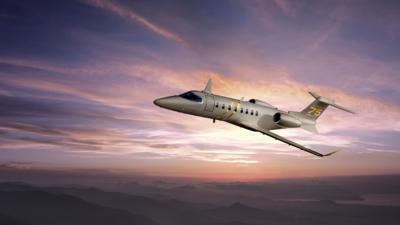Wed, Jan 05, 2022
An Unexpectedly Strong Year for Private/Business Aerospace
The COVID-19 changes, and their associated aftereffects, have been a mixed bag for aviation. Those prepared to capitalize on the changes have seen bountiful opportunities to expand, with private and business aviation seeing expansions and growth rarely seen as passengers tire of the hassles imposed on airline travel. Strategic investment firm BRIFO opened the year with a brief look at the state of the market.

With 2020's rapid lockdowns by fiat, some remained unprepared for the ensuing changes, assuming that the drop in travel was organic and would take time to return to its 2019 levels. Airlines saw a pronounced decline for a time as many locations imposed temporary travel restrictions, worsened by a litany of new travel rules throughout the process of public airline transport. Those passengers who could afford to avoid the increasingly tiresome process began reconsidering private flight, resulting in one of the best years for business aviation in recent memory. Foley remarks that as travelers emerged from the 2020 doldrums into a resurgent economy, "droves of newcomers flocked to personal aircraft to avoid the hoi polloi at public airports and on airliners. Those who were already private jet savvy doubled down."
The result was a 45% increase for business aircraft flight in North America, up an impressive 21% from its recent pre-pandemic levels. Fractional activity, the more affordably palatable form of the private jet-set life, saw a 51% increase from the year before, with 48% and 40% boosts to corporate and charger flight activity. Doubled down, indeed, like fractional ownership newcomer Jet It saw. Its 23-strong fleet rose by 13 pricey HondaJets in 2021, with even more on the horizon. Even in Europe, with its rapiéçage of regulations and closures, flights jumped 40% since November 2019, sporting a 97% increase over the 2020 totals.
Demand for private aircraft has followed these trends, with pre owned aircraft being snapped up in droves, leaving only 4% of the fleet for sale, at best a third of the norm. The dearth of used, or the more marketably-said "pre-owned" airplanes has led to increased buying pressure for new production. Many aircraft makers, Foley says, led to "aircraft makers reporting book-to-bill ratios of 2, meaning that for every jet they delivered they received 2 more orders."
More News
Aero Linx: Transport Canada We are a federal institution, leading the Transport Canada portfolio and working with our partners. Transport Canada is responsible for transportation p>[...]
Gross Navigation Error (GNE) A lateral deviation from a cleared track, normally in excess of 25 Nautical Miles (NM). More stringent standards (for example, 10NM in some parts of th>[...]
From AirVenture 2017 (YouTube Edition): Flight-Proven Booster On Display At AirVenture… EAA AirVenture Oshkosh is known primarily as a celebration of experimental and amateu>[...]
Aircraft Parachute System (CAPS) Was Deployed About 293 Ft Above Ground Level, Which Was Too Low To Allow For Full Deployment Of The Parachute System Analysis: The day before the a>[...]
Also: 48th Annual Air Race Classic, Hot Air Balloon Fire, FAA v Banning 100LL, Complete Remote Pilot The news Piper PA-18 Super Cub owners have been waiting for has finally arrived>[...]
 ANN's Daily Aero-Linx (06.29.25)
ANN's Daily Aero-Linx (06.29.25) ANN's Daily Aero-Term (06.29.25): Gross Navigation Error (GNE)
ANN's Daily Aero-Term (06.29.25): Gross Navigation Error (GNE) Classic Aero-TV: Anticipating Futurespace - Blue Origin Visits Airventure 2017
Classic Aero-TV: Anticipating Futurespace - Blue Origin Visits Airventure 2017 NTSB Final Report: Cirrus SR22
NTSB Final Report: Cirrus SR22 Airborne Affordable Flyers 06.26.25: PA18 Upgrades, Delta Force, Rhinebeck
Airborne Affordable Flyers 06.26.25: PA18 Upgrades, Delta Force, Rhinebeck



